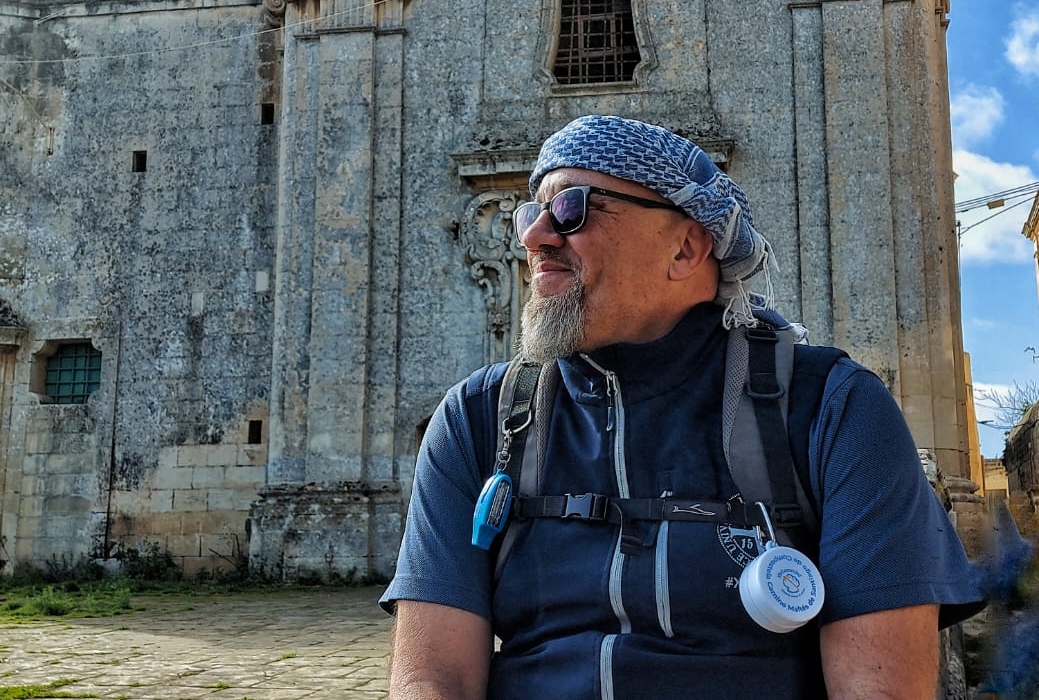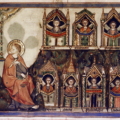For the first time in its history, the General Assembly of Camino Europa Compostela is being held outside Santiago de Compostela, and the XirCammini association based in Malta has the honor of hosting it. This choice is not merely symbolic; it marks a significant recognition of Malta’s deep cultural and historical connections to the broader pilgrimage network.
The Camino Maltés, a route that connects Malta to the legendary Camino de Santiago, gains considerable prominence from this gathering, hosted by XirCammini. It underscores Malta’s role as a bridge between the ancient and the contemporary, and between the diverse cultural currents that have shaped Europe’s pilgrimage traditions over centuries.
XirCammini is a non-profit voluntary organization that researches, promotes, and participates in hiking and pilgrimage routes across Europe, the Middle East, and beyond, while also developing and reviving ancient routes within Malta itself. A long-time advocate for faith-inspired travel, cultural heritage, and walking as a transformative practice, Portelli has walked extensively across Europe, following historic caminos and scouting routes that connect history, spirituality, and landscape. His leadership has positioned XirCammini as a key actor in reviving Malta’s pilgrimage tradition and integrating it into the broader European pilgrimage network.
In this interview, we speak with James Portelli, the passionate founder of XirCammini, who shares insights into the growing influence of the Camino Maltés, the revival of ancient routes, and the unique position of Malta as a hub for cultural exchange and pilgrimage in the Mediterranean.
- XirCammini draws from both Semitic and Romance linguistic roots, signaling a deliberate convergence of cultures. How does this synthesis reflect the broader mission of your organization to bridge historical and geographic divides through pilgrimage routes?
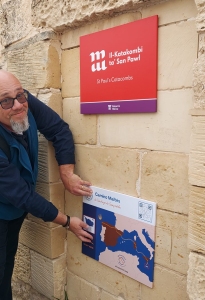
This duality exists in anything Maltese from temperament, to cuisine, language and customs. Our name reflects this Xirca meaning Association (semitic Maltese) and Cammini meaning walks from the romance language. A beautiful example of this, from a point of interest on one of our Maltese Caminos, the Sancti Pauli 60AD is Ghajn Rasool in St. Paul’s Bay. Rasool is the semitic word for Prophet. Ghajn Rasool is where St. Paul (Malta’s first evangeliser) drew water and this source of water became known as the well of the prophet; in semitic (and Islamic inference) with reference to an, earlier, Christian evangelizer. The semitic is closer to our roots as Maltese.
- How does this synthesis reflect the broader mission of your organization to bridge historical and geographic divides through pilgrimage routes?
As XirCammini we believe that pilgrimages across Europe since the Middle Ages were a unifying force among nations. People travelled from every kingdom, princedom, dukedom and bishopric state across Europe to the many Loca Sancta in England, Scotland, Spain, France, Italy, Germany and many more countries across Europe.
Mediaeval Malta also welcomed Muslim, Jewish and Christian pilgrims to their holy lands, as well as Muslim refugees, for example, escaping the Hafsid’s rule in North Africa. On our pilgrimage routes we often “join the dots” between the different cultures and they converged and -existed, peacefully or otherwise, over the ages.
- With over 50 historic routes across Europe and growing attention to trails beyond the continent, how do you see pilgrimage contributing to a shared European and Mediterranean heritage, particularly in regions often overlooked in mainstream narratives?
XirCammini was conceived in 2018 during one of the historic Caminos de Santiago – the Camino Primitivo from Oviedo to Santiago de Compostela. Since then, we have walked and scouted Camino routes in Switzerland, Germany, Austria, France, Spain, mainland Italy, Sicily and Sardegna, Portugal, United Kingdom, Ireland, Slovakia, Latvia and Lithuania.
- The revival of ancient pilgrimage routes has clear cultural and environmental dimensions, but what role do you see them playing in regional economies, especially in rural or depopulated areas?
The revival of ancient pilgrimage routes has clear cultural and environmental … Santiago de Compostela was declared a UNESCO heritage in 1985 and in 1993 the route was also declared of UNESCO Heritage importance, followed by similar, subsequent, declarations by the European Union in respect historical and heritage routes in Europe. Today there is even a EU inter-parliamentary group dedicated to heritage routes across Europe.
This has spurred the revival and development of several historical routes across Europe, joining the dotted lines across Europe across Europe’s ancient kingdoms. This is not limited to faith heritage walks. We are also seeing other routes developing, such as the Lighthouse routes, the smugglers’ routes and other routes of historic significance.
- As XirCammini prepares for the General Assembly of Pilgrimage Routes in May, what are the key themes or challenges you hope to address in fostering international collaboration among walking communities?
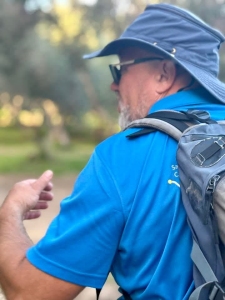
The Camino Conference weekend, supported by several sponsors the main one being the Malta Tourism Authority, will comprise
– A movie premiere (24th May), “The Way | My Way” with the participation of the author / director Mr. Bill Bennett, the producer and actor, Jennifer Cluff and actor and veteran Camino afficionado Johnnie Walker Santiago. This will be held in the historic St James Cavalier in Castille Place, Valletta (Historically the Castilian quarter of the City of the Knights of St John, at the head of what was previously St James Street and the Church of St James).
– an Art Exhibition (19th – 24th May) entitled “ It’s all in the journey.” The exhibition will showcase two veteran artists and two up-and-coming artists, three of which have walked several Caminos in recent years.
– A Conference (25th May) which will attract around 200 delegates of whom 100 would be overseas delegates from 16 countries / 23 associations and the other 100 delegates being Maltese Camino afficionados. The Conference topics include: “Transcending faiths over millennia” A Historic / Academic View on Pilgrimages; “6 months on Camino”. A Pilgrim’s account from the West of Ireland, across Ireland, United Kingdom, France and Spain to Santiago de Compostela; and a panel discussion: “The Camino: Religious, Spiritual or Humanist?” Malta as a Faith Tourism Destination.
– The various associations will also make available information on their various Caminos across Europe on specially designated desks in the Conference hall foyer.
– An Ecumenical Service on the 25th May in the historic Oratory of the Co Cathedral of St. John, home to Caravaggio’s “Beheading of St Joh” and “St Jerome.”
On the 26th May, we’ll have CEC’s General Assembly, which would be a ‘closed event’ for the Federation’s members. As it continues to welcome new members from European associations, one would expect that the Federation will discuss the financing and development of new routes across Europe, greater cooperation between the European associations and with public entities and national and European level, on-going cooperation with camino associations outside the EU, youth and the camino and projects of general interest to the members.
- In your experience, what distinguishes the contemporary pilgrim—often secular or pluralistic in outlook—from historical counterparts, and how does this shift influence the future of faith-based and cultural travel?
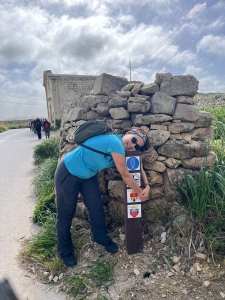
If one had to read Chaucer’s Pilgrims’ Tales with a critical eye, it’s not difficult to deduce that there isn’t much difference between the medieval pilgrim living in a society dominated by Christendom (as opposed to Christianity) and today’s pilgrim in a pluralistic society. Why? The pilgrims from the various tales came from various walks of life, and, maybe more covertly than today, they were not pilgrims for religious motives. Then, some acquired pilgrim passports just to be able to travel outside the confines of society as they knew it and explore the greater world. It is no different today, albeit overtly so.
So walk the camino for religious (Christian) motives, whereas others define spirituality in a wider sense and set out to discover their inner self or the universe of their spirituality. A significant portion of the “pilgrims” today walk as a means of physical exercise, social interaction, emotional unburdening or a combination of all of these. XirCammini encompasses all of these in its motto, “Corpus, Mens et Anima.” We walk for the benefit of all three elements that make us who we are.
- What motivated you to promote pilgrimages?
This is one of those simple questions with a complex answer! Where do I start? My father, with whom I walked extensively since childhood, loved the European Christian patrimony. He imbued in me this passion of that which is sacred; and for how diverse, individual internal journeys have come together in this external manifestation of rich the Christian heritage that we have today.
The love for walking was re-kindled in me when our children flew the nest and my wife and soulmate, urged me to join her on a Camino over a decade ago. Christianity, as a faith, is first and foremost a journey and not an institution. And, what best embodies this journey if not one’s individual journey, even if sometimes undertaken in communion with others?
- How do you think this conference will help promote Malta and the Camino?
Malta has been on the “faith tourism” scene at least since Alof Wignacourt in the early 1600s. The Order of St John promoted St Paul’s grotto as a place of pilgrimage since the seventeenth century. We had other sanctuaries and places of pilgrimage in Malta (possibly the most notable being the Sanctuary of Our Lady in Mellieħa since Byzantine times).
But, “Faith tourism” and a “Camino” are distinct. What we, as XirCammini wish to promote is Malta is not faith tourism. We want to promote the Camino culture; this ancient phemomenon that unified Europe centuries before the creation of the European Union Pilgrims traversed countries from their home town to a loca sancta, experiencing the countries and cultures in between. A Camino is apex of “immersive tourism”.
By gathering over 100 delegates from over 24 associations across 16 countries in Europe in Malta, we are sure that they will identify with the tapestry of Maltese culture built on the heritage of the knights of St John – who themselves – came from all across Europe almost half a millenium ago, promoting Malta as a centre of ancient Christianity. In turn, these delegates will be our ambassadors in Europe of the Christian patrimony in Malta and Gozo.



